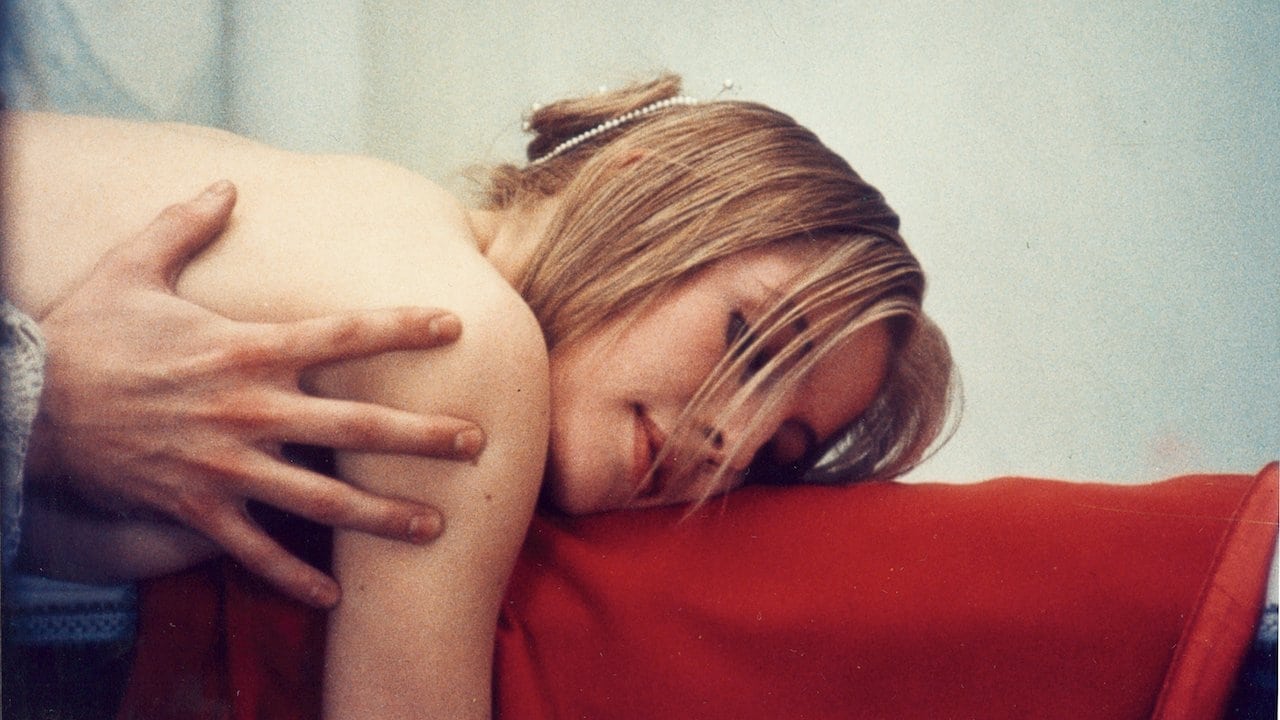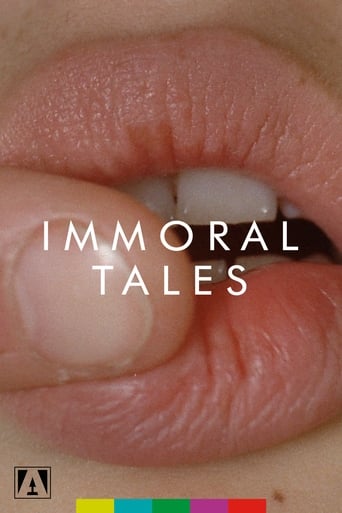



A lot of fun.
what a terribly boring film. I'm sorry but this is absolutely not deserving of best picture and will be forgotten quickly. Entertaining and engaging cinema? No. Nothing performances with flat faces and mistaking silence for subtlety.
View MoreThere's no way I can possibly love it entirely but I just think its ridiculously bad, but enjoyable at the same time.
View MoreA film of deceptively outspoken contemporary relevance, this is cinema at its most alert, alarming and alive.
View MoreBathory (the Countess not the black metal group) gets a doing here.And doing she gets.She lives among her naked ladies of the castle as they serve her in every way possible.The story was hard to follow despite the many points it made. And I do agree, it says a lot about today as well.The art direction and cinematography were both excellent. But the pace crept a bit too slow. It seemed as if they were padding it out as much as possible.But the young lasses looked FABulous naked. And they were naked most of the time too.Great looking film, but if you get more out of it, good on you.
View MoreThis film, french in language but hungarian by production, depicts artistic nudity at it's greatest degree of explicitness. What we see are four episodes, one roughly taking place at present (the date of production is 1974), the other three being new interpretations of historic events and anecdotes. It is quite a 'slow' film that tries to capture it's erotic contents in an objective, unromantic manner, while being honest in portraying the sexual energy that a naked body alone offers. There are obviously a couple of common themes among the four tales, and it's not necessarily their erotic content alone that fits them together.Let's take an spoiler full look at the four stories.The first episode shows a young girl, maybe 16, and a boy, few years older, on a bicycle-trip. They stop nearby the beach and climb on the shores cliffs. He seems to be in power; she talks about her innocent kissing experiences on parties, while he openly explains to attend prostitutes weekly. The difference, as is seems, is his greater experience and her virginity, and, since this film is called 'immoral' and since there are some 'visual innuendos', it seems pretty clear where it all leads to. While exclaiming pseudo-philosophical remarks on the sea and nature, he leads her into oral sex, which is introduced by his precise description of what he and she will do, think and expect. After finishing that, and while the tide approaches the two connected bodies (hers nude, his still dressed), she asks for more of that pleasure but he replies that it was never intended to be pleasure, but rather a teaching for her. One wonders: Was he really in power over her, or is it vice versa? He's the one that tries to manipulate her, only to see that she doesn't bother his wishes, but remains her own. Even though the viewer feels she's very devote, she remains a 'straighter', more open position towards sexuality than he does. He needs a cover story for getting what we wanted, and he builds a sort of ritual around it whereas she only seems to agree because she wants the same thing as well.The second episode is about 'Thérèse Philosophe'. It takes place at around 1900. A young girl is locked into a room by her mother(?) because she disappeared after the last church session. The viewer knows that she simply remained in the church, but her mother doesn't believe that. In order to punish her for her suspected in obedience, she is locked for three days and three nights. As we already know from the church sequence, she regularly imagines to hear the voice of the Holy Spirit, introduced by organ clusters, who explains that he will take of her and will do his best to serve her wishes, whatever they may be. In fact, this voice is her own voice, the voice of her own secret desires that demand to be set free. While locked and restricted to concentrate on herself, that voice leads her into sexual phantasy's also supported by her finding pornographic photos and finally a book by de Sade, 'Thérèse Philosophe', of which the etchings receive more interest than the text. By reading her prayer book at one point and de Sade at another, her sexuality and belief are brought into connection. Other than usual, she finds a way to combine these two which leads to a fairly explicit masturbation scene. Were it not done in a openly artistic manner, the idea would rather fit into cheap pornography (it involves a cucumber). In the end, on the climax of both physical exhaustion and spiritual experience, she pushes de Sade aside and gets hold of her prayer book only to reveal that the important thing about it is the picture of a man, kept alongside the pictures of the holy figures and religious processions.Episode three is just as 'de Sadian' as the previous one. It deals with the 17th century hungarian Comtesse Barthory, played by Paloma Picasso, who abducts attractive girls from the small villages nearby her castle. We and the people of the villages can expect that the purpose for that is a criminal one. The girls, on the other hand, behave self-conscious and open when bathing themselves in the castle while being watched at by the Comtesse and her servant. At this point, about two dozen girls in full front nudity can been seen on the screen constantly. They are given a poisoned liquor and then the Comtesse steps among them. Turned frenzy by the drink, the girls start to rip off her famed dress of jewelry, therefore undressing her, while attacking themselves to get hold of more jewels. It gets bloody here, but these screens are quite reluctantly filmed if compared to the erotic part. The surviving girls, one can read between the lines, are killed by the servant, and then finally the Comtesse can take her bath in their blood and it's a bloodbath as literally as one has ever been. Following that, the servant turns out to be a girl himself, and she and the Comtesse share a very erotic, none-bizarre sexual act. It ends with the servant secretly calling the Kings Men to get hold of the Comtesse; while she is taken away, it is revealed that the servant is in love with one to them, and they kiss each other while the scene fades out.And finally we are taken in the life of Lucrezia Borgia. She visits her father, Pope Alexander VI, and her brother, a cardinal, in Rome. Her husband, himself a Count and faithful Christian, is confronted with an incestuous family situation. Upon being shocked by what he sees he suspects to be killed, which happens not shortly after. Then the path is free for the family connection, and the unite in an orgy than is very likely to hurt some peoples religious beliefs. And the same time, as a visual counterpart, we see excerpts of Savonarola preaching against the decadence of church. He is killed and burned, while Lucrezias happily gives birth to a child whose father is her father as well thereby symbolizing the perversion dominating the papacy at this time. Lucrezias and the child smile at each other, a scene that produces an uneasy feeling in the viewer. And it's not the only scene with that quality. This highly controversial film is immoral because that is a lack of critical comment about what we see. We see people stepping over barriers because they are overwhelmed by their sexual energies. Especially the last two tales present a world in which power and sexuality are combined and used for dominance and destruction without remorse. It all takes place in uncivilized worlds that pretends to be rich of culture. How different is that from today? Since this, like all films, is a piece of art and it's more art than most , there is no need for the producers to make a distancing statement. You decide what the pictures do to you: Be they erotic or repulsive, what you see in them is part of yourself and probably part of your own perspective towards sexuality.
View MoreWith another round of Roman Catholic sex scandals making the headlines, this movie seems as timely as ever. It very graphically, although rarely explicitly, details the facade of piety that hides the sexual debauchery of the Holy Roman Empire.The lavish sets and excellent cinematography also heighten the overall sensuousness of these "immoral" tales.Many gorgeous, supermodel types going completely nude also adds the needed touch of licentiousness to the proceedings.No doubt, this is a seventies classic.
View MoreOkay, okay... 1974. The Europeans have figured out that a world-wide audience exists for films that portray full-frontal nudity, regardless of storyline or context. Borowczyk has chosen four stories from four eras to flaunt some skin... the 1970s right back to the 1400s. He takes the cake, however, with the third segment, featuring Pablo's daughter Paloma Picasso: she plays a countess in the 1700s bent on preserving her youth and vitality by bathing in the blood of virgins. To get this far, we are treated to the most incredible series of visuals ever filmed! At least thirty young, beautiful, and (gasp!) very naked women are brought forward to shower, cavort, pray, play with each other, and perform some sort of ritual that leads to their demise. You will watch the whole film, but you will come away remembering only this third segment. All the nudity aside, credit Borowczyk and crew for doing a fine job technically and photographically on this film. Definitely worth seeing.
View More